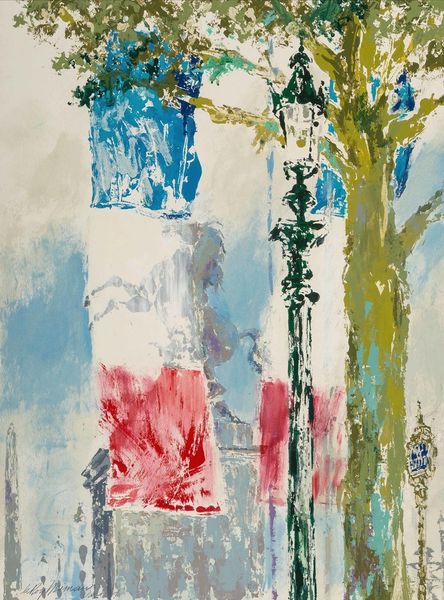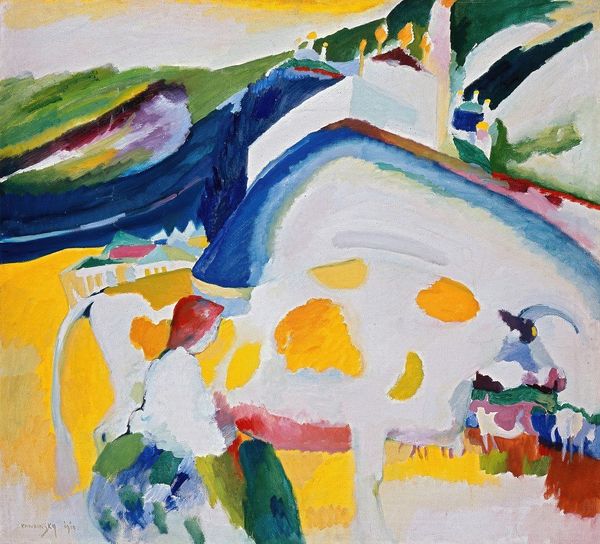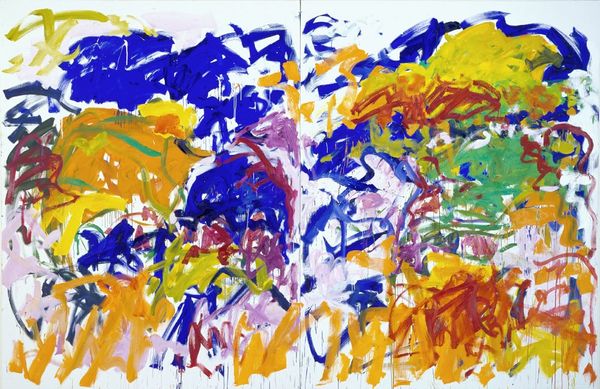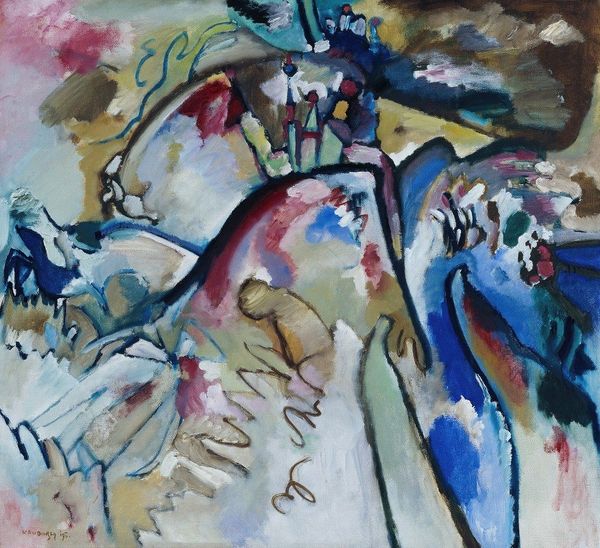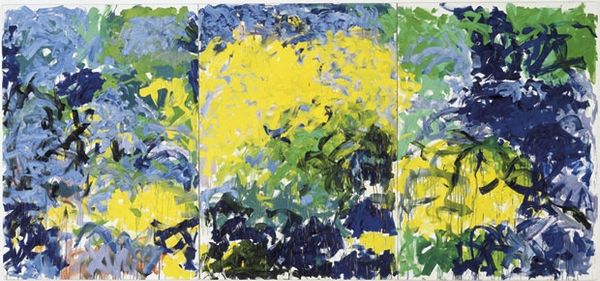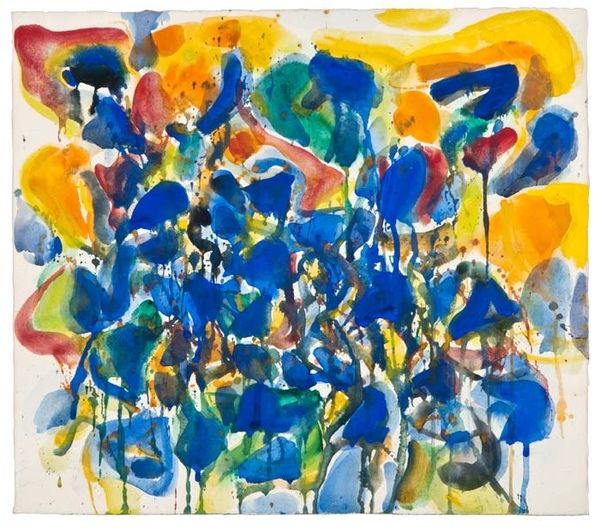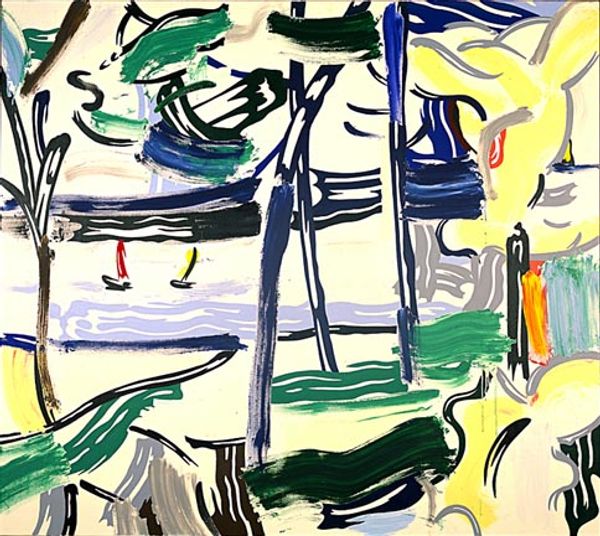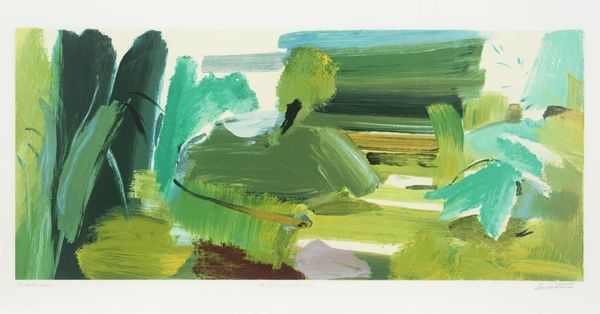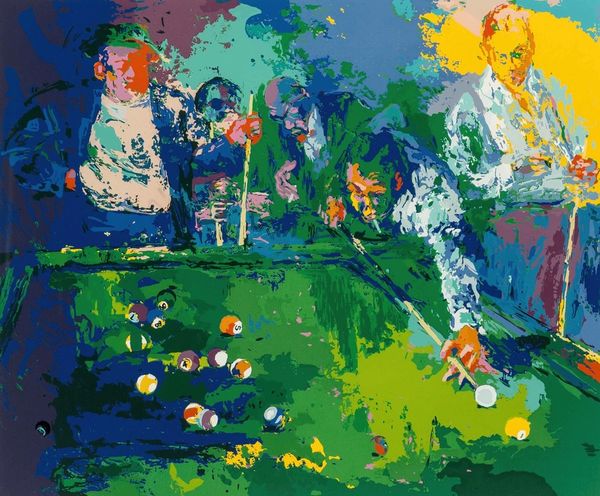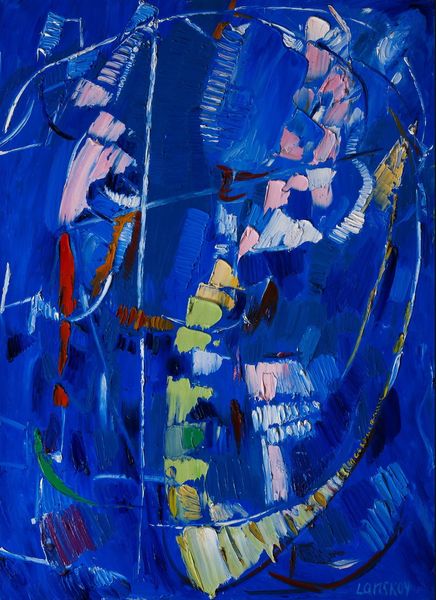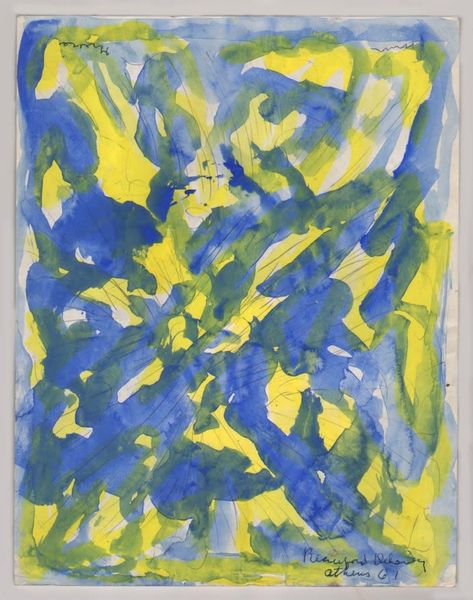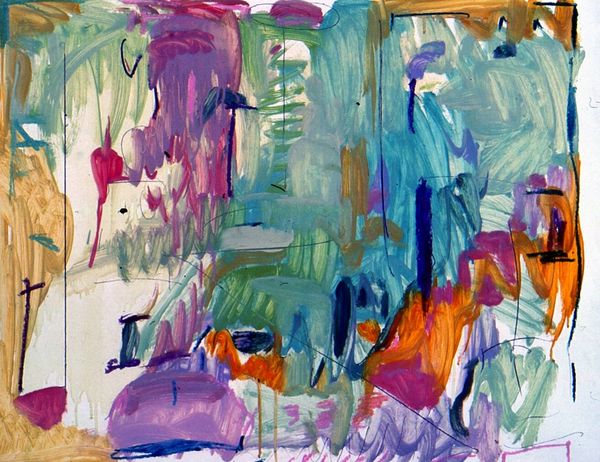
stain, acrylic-paint
#
abstract-expressionism
#
abstract expressionism
#
abstract painting
#
stain
#
landscape
#
colour-field-painting
#
acrylic-paint
#
acrylic on canvas
#
abstraction
Dimensions: 148 x 176 cm
Copyright: Helen Frankenthaler,Fair Use
Editor: "Basque Beach" created by Helen Frankenthaler in 1958, made with acrylic on canvas. The artwork radiates a sort of calmness. What draws my attention is the color scheme: the bright yellows juxtaposed with those calming blues and purples. How do you interpret this work, given its place in art history? Curator: Considering the socio-political landscape of the late 1950s, the movement towards abstraction offered artists a space to explore new forms of expression beyond the constraints of representational art. Do you see echoes of Abstract Expressionism here? It also reminds me of color field painting where expanses of color are meant to evoke emotion, divorced from specific narrative. This piece, as "Basque Beach," evokes, perhaps, not a literal depiction of a beach, but an *idea* of it. Editor: I see that – the freedom from representation! It's almost like a memory of a beach rather than a picture of it. So, the 'stain' technique – how did that impact the reception of her work at the time? Curator: That technique, of staining the canvas directly with diluted paint, was revolutionary, defying traditional painting methods where paint sat atop a prepared surface. The flatness, the raw canvas showing through – it challenged institutional norms, paving the way for Post-Painterly Abstraction and influencing many artists thereafter. Were viewers ready for this sort of bold break? That's the critical question of its initial reception. Editor: So it wasn't just about the aesthetics but also about challenging what art could be... How museums shape our understanding is crucial here. This dialogue has truly expanded my understanding of the artwork. I really learned how to view the historical context of the work through the sociopolitical elements that help determine its value. Curator: And reflecting on that interplay of technique and cultural reception allows us a richer, more nuanced appreciation. Examining art through a socio-political lens makes our interpretation of it come alive!
Comments
No comments
Be the first to comment and join the conversation on the ultimate creative platform.
